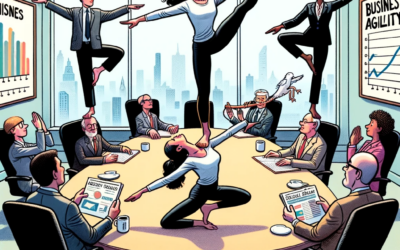How to Prepare for a Meeting
“Before anything else, preparation is the key to success.”
– Alexander Graham Bell
The first eight steps to prepare for a meeting are:
1. Set a clear and achievable goal for the meeting that is in line with the organization’s vision and mission
2. Choose the appropriate type of meeting: decision-making, informational, motivational, or creative
3. Select the right participants (without offending anyone)
4. Schedule and structure the meeting to maximize the average attention span
5. Choose the meeting space that is right for your meeting type and needs
6. Make sure your technology and equipment needs are attended to
7. Provide sugary snacks and/or oxygen, so that participants stay alert
8. Fill all the meeting roles.
Now let’s discuss how to prepare the agenda.
Step #9: Prepare the Agenda
First, send an e-mail to participants and ask if they have any items that they would like to see on the agenda. The more involved participants are in the shaping of the agenda, the greater their level of engagement and accountability.
Next, produce a concise and readable agenda that ideally fits on one page. The GPS Agenda Meeting Template makes it easy to produce an agenda, so feel free to use that or create a template of your own to save yourself time in the future.
The agenda for a meeting should contain the following elements:
- Purpose or goal of the meeting
- Who will be attending and in what role
- The start and end time of the meeting
- The location of the meeting with specific directions for outside parties, as well as dial-in instructions and/or video connection instructions
- A warm-up question: Attendees may interrupt, distract, or sabotage meetings if they’re not given an opportunity to share their concerns. Get these concerns out at the start, so that the focus can then go to the meeting’s purpose. You might ask, “What goals or feelings keep bubbling up when you think about the purpose of this meeting?” or “What might distract you from participating fully in this meeting?”
- Recaps and follow-ups from relevant past meetings
- The items that will be discussed with estimated time allocations and assigned DRI (Directly Responsible Individual). These items should be written with active verbs to create a sense of movement to the agenda.
- A place to record agreed-upon actions and assignments
- Cool-down question: This question is designed to help people say that which they have been wanting to voice but have not had a chance. This allows private conversations from becoming an issue after the meeting. You might ask, “What should have been said, but wasn’t?”
Once you have your agenda prepared, run it by the participants you suspect might have qualms about it. Give them a chance to suggest edits before you send it out to all participants. When you do forward the agenda to all participants, be sure to attach supplemental reading.
Sending out Supplements
Anyone can send out supplemental reading; the challenge is getting participants to read it before the meeting. If participants fail to read in advance, the meeting may be ineffective and frustrating for those who came prepared, especially the leader. If it is a regularly scheduled meeting, let participants know how long it will take to review the materials and have them block time the day before the meeting to accomplish this task. Of course, you must provide the material at least the day prior; if the material isn’t attached to the agenda, let them know when they can expect to receive it. If the meeting is episodic, send an email providing details about what they will be receiving, as well as how much time they should set aside for preparation.
In addition to sending an electronic copy of the information, consider sending a hard copy, too, since some prefer to read in that format. Attach supplemental materials into your calendaring system for all participants so that they can easily find it in the schedule. Include the address in the location part of the schedule along with a direct phone number in case outside participants have issues arriving.
Series on how to prepare for a meeting:
How to Prepare for a Meeting: Steps #1 & 2
How to Prepare for a Meeting: Step #3
How to Prepare for a Meeting: Step #4
How to Prepare for a Meeting: Steps #5-7



